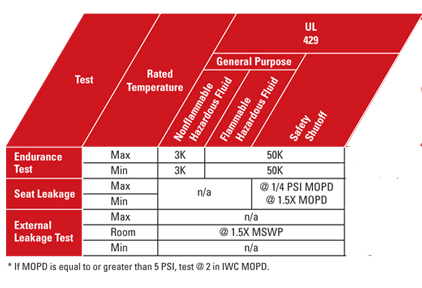TECH FLASH
Five keys for low-temperature valve and fluid automation device selection
When temperatures drop, will your valves and fluid automation devices hold up?
Everyone from engineering houses and original equipment manufacturers to end-users rely on valves to control the flow of compressed air and other fluids. But operations involving low temperatures can present special challenges for fluid automation devices in terms of material flexibility and seal integrity. Most valve equipment is rated for reliable operation to only 32°F, while ambient temperatures in manufacturing contexts including food and beverage can reach -40°F.
Here are five key qualities to consider when purchasing valves, cylinders and other fluid automation devices for operations at low ambient temperatures:
First, purchasers must consider the reliability and reputation of the equipment. A lack of resiliency and flexibility along with dormancy are the main causes of degraded performance, according to Bob Cadwell, business development manager at ASCO Numatics. The elastomeric polymers in a valve disc or diaphragm shrink and enter a brittle, glass-like state as temperatures drop, allowing possible leak paths to form. When valves are operated at infrequent intervals such as low-cycling applications, dormancy can cause the seal to adhere to grooves and imperfections in its mating components, causing slow or unreliable operation. These potential problems can be mitigated by selecting proper elastomers that stand up to cold temperatures as well as applying high-grade lubricants during assembly.
The second major consideration when selecting low-temperature valve and fluid automation devices is certification and compliance. Safety certifiers such as Underwriter Laboratories (UL) and the Canadian Standards Association (CSA) publish safety standards for both general-purpose and safety shutoff valves, including endurance, valve seat leakage and external leakage.

|
| UL testing requirements for both general-purpose and safety shutoff valves. Source: ASCO Numatics |
Some suppliers may choose to conduct additional tests as well. Cadwell recommends using appropriate documentation—or lack thereof—as a significant determining factor in your decision to use a new product or one from a new supplier.
Third, consider the breadth and depth of offerings when making a decision on low-temperature valves and fluid automation devices. One-stop shopping for low-temperature products is attractive to many operators because it offers increased convenience and time savings. To consolidate inventories or meet worldwide specifications, some global companies even choose to specify low-temperature valves from a single source and use them exclusively for a given application, even in warmer regions.
The fourth criterion to consider is the need for devices that function at low temperatures on low power. This consideration is most relevant to industries such as oil and gas, where valves in remote locations may necessitate heat tracing or protection.
Finally, choosing a supplier that will offer superior service and support for low-ambient temperature valves and fluid automation devices is essential. Cadwell recommends looking for clear, easy-to-use catalogs and ordering materials, as well as suppliers with instantly accessible configurations and online ordering. Some suppliers allow users to download 2-D drawings and 3-D models directly into their CAD software, which is highly useful for OEM designers. If your company is global, does the supplier offer robust support? Is it responsive to questions and concerns? Finally, consider availability. According to Cadwell, users say availability has become a weak point for manufacturers of low-ambient temperature valves in recent years.
Proper selection of low-ambient temperature valves and fluid automation systems can save major headaches down the road and ensure proper performance for years to come. By considering these criteria, purchasers will be better equipped to make a smart decision.
For more information: info-valve@asco.com.
Looking for a reprint of this article?
From high-res PDFs to custom plaques, order your copy today!







